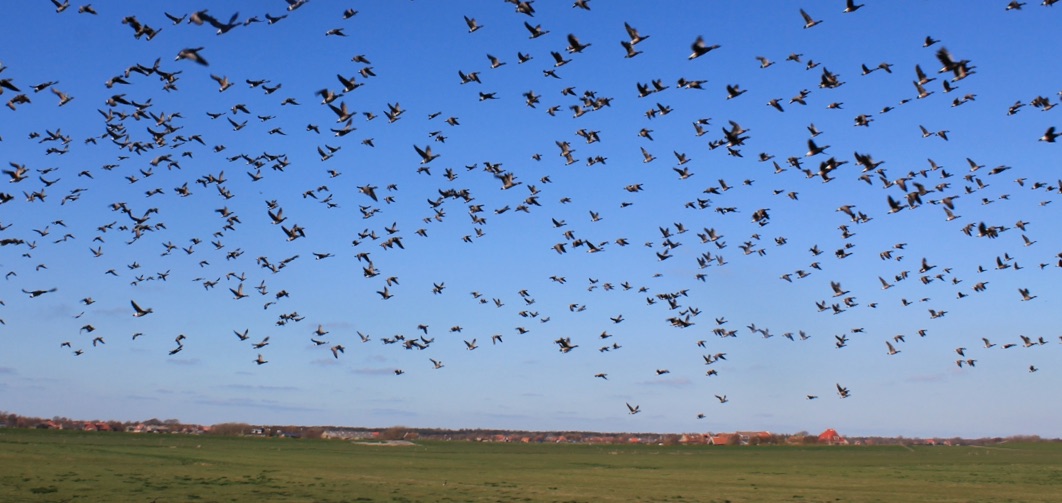Energetics of long-distance migration
Dark-bellied Brent Geese (Branta bernicla bernicla) are high‐arctic breeding birds that feed extensively on intertidal mudflats outside the breeding season, where they graze on eelgrass Zostera spec.
Eelgrass beds are a restricted and endangered habitat around the world. After the decline of eelgrass beds in the Dutch Wadden Sea, the Brent goose population initially collapsed, but recovered later due to conservation actions and a habitat‐switch towards lower salt marsh vegetation and agricultural fields. Recently, the population has declined again following a long series of poor breeding years. Brent geese were among the first migratory species for which it was shown that spring conditions in the temperate region carried over to breeding performance in the Arctic. Recent evidence suggests that the quality of wintering and stopover sites may be vitally important to population processes in migrants.

In this project, I investigate the importance of non‐breeding habitats, eelgrass beds in particular, for Brent goose population dynamics and individual fitness, relative to the importance of alternative habitats. We equiped in total 30 birds with GPS trackers both on the island of Terschelling and the island of Schiermonnikoog in the Dutch Wadden Sea. The tags record the birds’ geographic position and activity every hour year-round, which reveals in detail the habitat use of the Brent geese along their flyway.
The project is funded by the Wadden Fund project Metawad‐1. Metawad‐1 is a 5-year research program carried out by a consortium made up of NIOZ, the University of Groningen, The Netherlands Institute of Ecology (NIOO), The Nature Information Foundation (Stichting Natuurinformatie) and the Dutch Centre for Field Ornithology (SOVON).
The first year-round migration tracks for 10 individual Dark-bellied Brent Geese, in relation to the retreating snow and ice cover:
